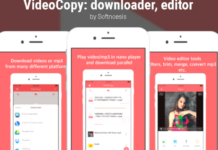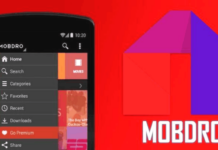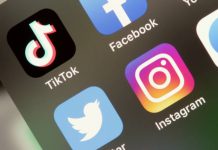Apple's new iPhones are a perfect blend of old and new. They are easy to use and efficient, and they help you conserve battery life. However, they have one major flaw - they don't close apps when you're not using them. Thankfully, Apple has addressed this problem by adding an option to close apps on the Home Screen.
Apple's new iPhones are a perfect mix of old and new
Apple's new iPhone 12 features a new way to close apps: swipe up from the bottom of the screen. This will open the app switcher and show all of your open apps as cards. Swipe up on the app you want to close, and it will disappear from the top of the screen. You can close up to three apps at a time. You can also use the Assistive Touch feature to replace a broken Home button. With Assistive Touch, you can close up to three apps at once by pressing up.
Swiping up on an app's preview will close it. This is particularly helpful when you want to close many apps at once. In some cases, the app may not close properly. In other cases, force-quitting the app will result in it not being closed. Regardless of which method you use, it is always best to close apps that you're not using. Having several apps open will drain your battery.
Force-quit and force-close are quick methods for closing apps that aren't working correctly. These methods work on iPhone, iPad, and Apple Watch devices. Generally, you can force-quit apps to fix temporary problems. For example, if your app freezes up, you can force-quit the app and it will automatically restart again. This method works on the iPhone 11 series, iPad, and Apple Watch.
When using iOS 7, you could force-quit apps by double-clicking the Home button or by swiping up on the app. However, this method is no longer available on the iPhone 12. With iOS 14, you can force-quit apps by using gestures instead. When using gestures, you can swipe up from the bottom of the screen. The app will close but may continue to run in the background.
Force-quitting apps is not the best option when your iPhone has more than one app open at once. Not only does this method not save battery life, but it can also make your phone run slower. Apple has developed iOS so that it will automatically manage your apps so that they won't take up too much memory or CPU. However, there are times when you'll need to force-quit an app if it's misbehaving.
They're easy to use
The iPhone 12 has a lot of new features that aren't available on previous models, but the basic functions of closing apps are still the same. To close an app, simply swipe it to the left or right. You can also use a swipe gesture to close multiple apps at once. Once the app has been closed, you can easily return to the Home Screen by tapping on the display.
Swipe up from the Home screen to view a list of open apps. If you want to force close multiple apps, you can swipe up and down on the app card. Alternatively, you can swipe left to close a single app. The swipe gesture is available on all iPhone models.
In iOS 12, you can also close multiple apps at once using the App Switcher. To do so, you must swipe up the display with three fingers simultaneously from the bottom to the top of the display. After doing so, you can swipe up to close two apps, three apps, or all of them. You can even use two fingers to close multiple apps at the same time. To make sure you're using the right technique, practice closing apps on the iPhone.
If the swipe gesture doesn't work, try restarting your iPhone. You can also try updating apps on your phone. But these are not the only ways of closing apps on iPhone 12. You can also use the Force Close button if the app is unresponsive. When your iPhone is in this mode, the app will be put in suspended mode by default.
The process to close apps on iPhone 12 is easy and convenient. Most people make the mistake of swiping up each app to close them, but this is unnecessary and wastes your time. You can use the Force Close button to close apps that are running in the background.
Another way to close apps on iPhone 12 is to double-press the Home button. This will bring up the App Switcher, where you can see the open apps. When an app is closed, it will disappear from the screen.
They're efficient
Keeping apps closed and minimizing background processes are two of the many advantages of iPhone 12. Besides saving battery life, you can also troubleshoot buggy apps and fix minor issues without restarting your device. To force-close an app, simply double-press the Home button. Then, swipe up on the app that is causing the problem. However, this method does not work for models without a Home button.
The iPhone 12 has a feature called the app switcher that shows all the apps you're using as cards. To close an app, you simply swipe it up to the top of the screen. You can also swipe up to close multiple apps at once. It's a clever feature, but it's not a perfect solution to most complaints. Still, if you're looking to close a large number of apps quickly, this tip might be useful.
Another advantage of the iPhone 12 is that it can close multiple apps at once. To do so, simply hold the home button and power button simultaneously. Once you've completed your task, tap the display to return to the home screen. While this method may seem cumbersome, it does allow you to close several apps at once without sacrificing battery life.
If you're not able to close an app, you can always force-quit it by flicking upward. Then, you can repeat the same procedure to close other apps. However, it's recommended that you not force-quit any app you use regularly. This way, you won't end up with a cluttered phone.
Another benefit of closing apps is that it makes switching between apps easier. It also cleans up the App Switcher. By doing this, you can free up more RAM in your device. By doing this, your phone will have more RAM to run new apps. It's also more responsive and less likely to crash.
Force-closing apps on iPhone is similar to the way Android devices do it, but the process for iOS is slightly different. For example, iPhone users can force-close apps by double-pressing the home button or by sliding up the app window. However, you shouldn't make this a habit; swiping up on apps is more time-consuming and less efficient than forcing them.
They save battery life
If you are wondering how to save battery life on iPhone 12, you should know that closing apps is not necessarily beneficial. Apps are still running in the background when you close them. Often, people swipe up to close them but this simply moves them to a suspended state. This gesture control is confusing and makes it difficult to quickly open and close an app. However, running apps in the background consumes battery and processor resources, slowing down the iPhone. Additionally, apps do not remember data when they are suspended.
Luckily, there are ways to save battery life on iPhone without sacrificing performance. You can also avoid the need to constantly restart your phone to save battery. You should avoid restarting your phone whenever you are working on an app. You can try to close the app that appears to be stuck to save battery life. However, you should not dismiss any app that displays a progress bar. It is better to wait for it to finish.
Besides ensuring that you close apps that are not in use, you can also reduce the number of background apps on your iPhone. Background apps are those that update automatically when you are not using them. This will ensure that you can access the latest information from your apps when you open them again.
The iPhone also lets you know which apps are using most of its battery life. Using this information, you can figure out which apps to delete or turn off. You can check your battery usage statistics by going into the Settings app and looking for the Battery tab. This will let you know which apps have been using the most power over the last day. It also displays your Battery Health, which directly impacts how much power your iPhone can hold.
When it comes to battery life, your iPhone's screen brightness and location services are two of the largest battery drains. Always make sure that you disable these features when not in use. You may also need to disconnect Bluetooth devices such as the Apple Watch. You can also disable all Bluetooth signals in the Settings app. Also, keep your iPhone away from high temperatures. Extreme temperatures can cause the battery to drain quickly.





